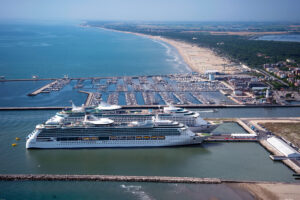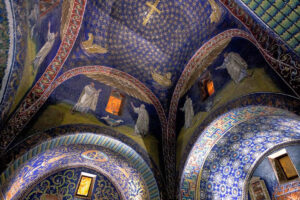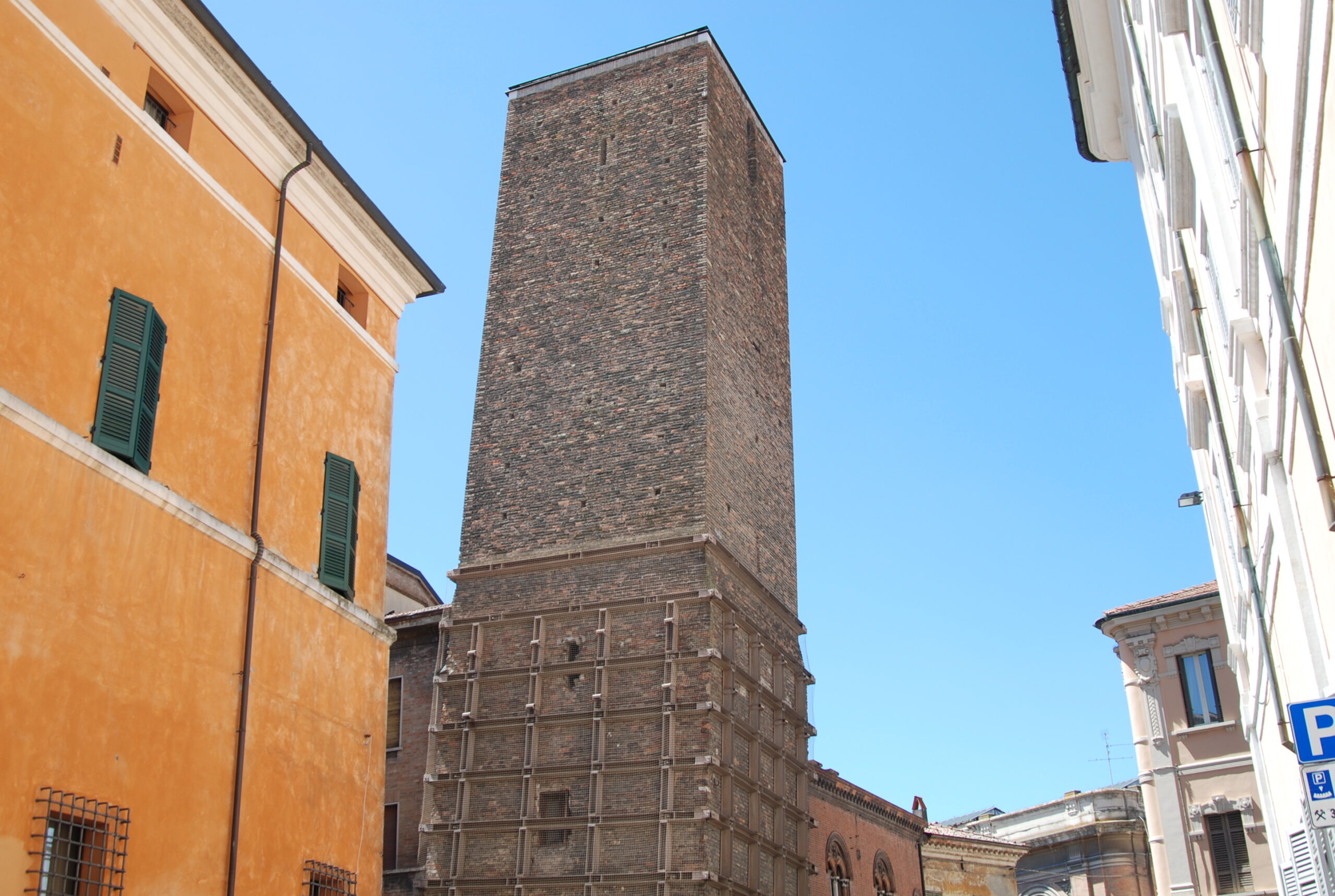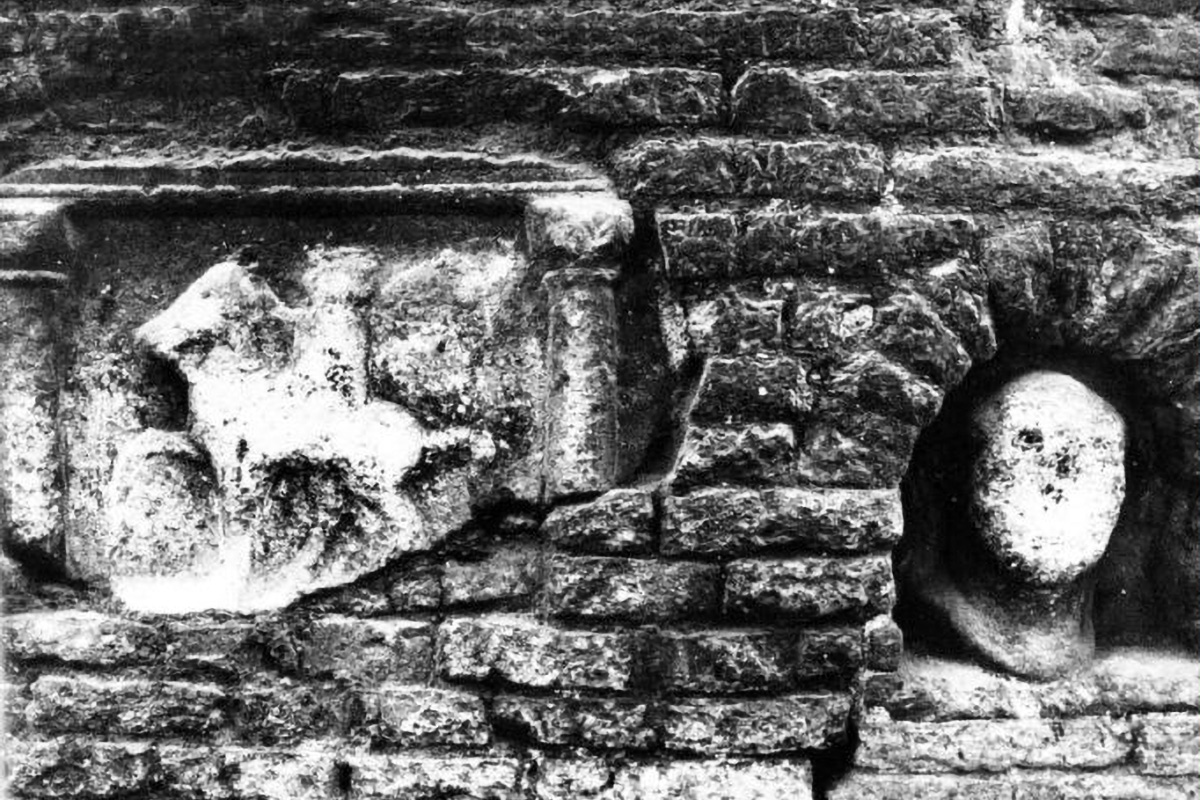Aristocratic tower of the 12th century, built as a symbol of power and social prestige, the MUNICIPAL TOWER stood along the course of river Padenna.
It may be the result of two different building phases: the lower part, dating back to the 6th century — as proved by the depth of the original street level — and the upper one, dating back between the 12th and the 13th century.
A tower and many changes
It is believed that the tower was once owned by the Guiccioli family, and was known as “dei beccai” (lit. of the butchers’), due to the many shops that sold game around Ponte Marino.
Given its 39-metre height, it served as a watchtower for centuries, while its bells were used to call citizens in religious or civil occasions, in case of calamity or danger. A service of great importance, as between the 15th and the beginning of the 20th century the lower part of the tower was home to the bell ringer, at least until 1915, when the building fell into disuse.
Over many centuries of activity, the bell tower has undergone many changes, in order to face stability problems caused maybe by the swinging of the bells.
In 2000, the upper part of the tower (about 13 meters) was removed, in order to prevent its collapse. Today, even if it is reduced to 26 meters, the building suffers from a slow process of underground landslide that also causes its gradual incline, earning it the title of “Leaning Tower“.
Looking for Mariola in Ravenna
The lower part of the tower is currently covered by scaffoldings ensuring its stability. They unfortunately cover also two very ancient marble reliefs embedded in one of the external sides of the tower: a Roman bas relief of a man on horseback (3rd century) and a very damaged head, maybe of a woman, whose features are not precisely recognizable.
The two figures, next to each other but facing different directions, have inspired the saying “Zarchê Mariola par Ravêna” (Romagna dialect for “looking for Mariola in Ravenna”) — which was also quoted by Cervantes in his Don Quixote — probably meaning “looking for and not finding something that is under your eyes”.
In 1999, during the works for the securing of the building, the Municipality of Ravenna had Mariola’s head removed and entrusted it to Ugo Cipriani’s Wunderkammer for its restauration. It is currently safeguarded by the Superintendence in its warehouses.








